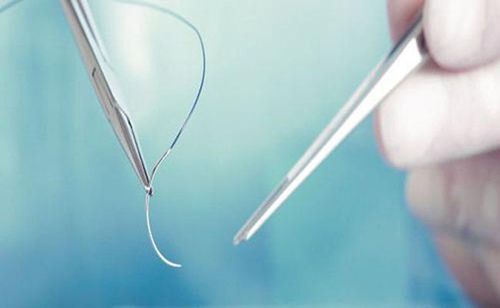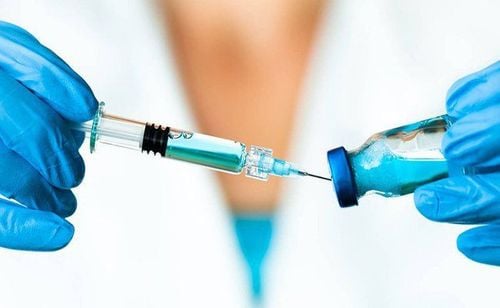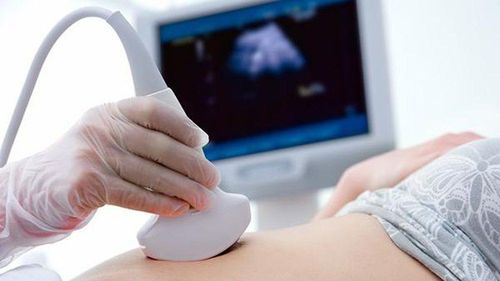This is an automatically translated article.
The article was consulted with Specialist Doctor I Truong Thi Phuong - Doctor of Obstetrics and Gynecology - Obstetrics and Gynecology Department - Vinmec Ha Long International General Hospital.When the cervix is weak enough to hold the pregnancy in the uterus, the doctor may prescribe a cervical stitch to keep the fetus developing normally in the uterus. When the fetus is 37-38 weeks old or when the pregnant woman shows signs of labor, the cervical collar will be sutured.
1. Indications and contraindications for cervical suture
Cervical band suture is indicated when:Diagnosis of cervical ectopic pregnancy (cervical short of less than 25mm, history of miscarriage or premature birth due to isthmus ...) There is a history of isthmus stitches Against Indications for suturing the cervix in the following cases:
Uterine contractions Bleeding from the uterus Inflammation of the membranes of membranes premature rupture of membranes Fetal abnormalities Acute genital inflammation.

Không khâu vòng tử cung khi ối vỡ non
2. Cervical collar stitching process
Perform cervical suture at gestational age 14 - 18 weeks (13 to < 20 weeks)Ultrasound assessment of cervical condition. Evaluation of vaginal infections. Must be treated if there is an infection.
There are 5 different cervical stitch techniques:
Mc Donald Shirodkar Wurm Lash tummy tuck. The most commonly used method is Mcdonald:
Use an insoluble thread, 5mm wide (Mersilene). The suture is located deep in the cervical tissue, at the level of the opening in the cervix, avoiding the amniotic fluid and bladder. The cervix is closed by 4 needles that make a loop of thread around the cervix. When applying sutures, the finger should be inserted into the cervical canal to avoid excessive suture tightening.

Phương pháp khâu vòng cổ tử cung thường dùng nhất là Mcdonald
3. Care after the cervical collar
Patients after cervical stitch must be carefully monitored: contractions, abdominal pain, bleeding, vaginal discharge. Bed rest for 12-24 hours. Discharge from the hospital if the patient has no uterine contractions within 24 hours after the procedure, no vaginal bleeding, and no rupture of membranes during follow-up. Healthy eating mode. Avoid intercourse, standing for a long time, carrying heavy objects. Ultrasound measures the length of the cervix periodically during examination. Use Progesterone continuously up to 36 weeks of pregnancy. Suture removal at >38 weeks or in labor. The use of tocolytics is not required. Use prophylactic antibiotics.
Tránh quan hệ sau khi khâu vòng cổ tử cung
4. Notes when cutting cervical sutures
According to experts, if the fetus in the abdomen develops normally, about 37-38 weeks, the doctor will cut the cervical suture for the pregnant woman.This is to avoid early labor, the cervix cannot be opened, which can lead to uterine rupture, which is dangerous to the life of mother and baby.
In some cases, after performing the cervical stitch procedure, if the pregnant woman sees early labor phenomena such as amniotic fluid leakage, uterine contractions, vaginal bleeding, etc., it is necessary to Immediately go to the hospital to be monitored by a doctor. If necessary, the specialist doctor will cut the cervical suture early for the pregnant woman.
Cervical suture removal should be performed at reputable medical facilities, to avoid possible complications such as infections that affect the life of pregnant women and fetuses.
Please dial HOTLINE for more information or register for an appointment HERE. Download MyVinmec app to make appointments faster and to manage your bookings easily.













